
- Subject:
- Biology
- Life Science
- Material Type:
- Unit of Study
- Provider:
- Ohio Open Ed Collaborative


Ecology is the study of the interactions of living organisms with their environment. One core goal of ecology is to understand the distribution and abundance of living things in the physical environment. Attainment of this goal requires the integration of scientific disciplines inside and outside of biology, such as mathematics, statistics, biochemistry, molecular biology, physiology, evolution, biodiversity, geology, and climatology.

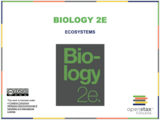
An ecosystem in biology is the first level of organization that includes biotic and abiotic (non-living) components. Ecosystem types vary widely, and ecologists study their structure and dynamics through field work and computer-based modeling. Understanding how energy flows through and materials are cycled within ecosystems.


Populations are dynamic entities. Populations consist all of the species living within a specific area, and populations fluctuate based on a number of factors: seasonal and yearly changes in the environment, natural disasters such as forest fires and volcanic eruptions, and competition for resources between and within species. Populations rarely, if ever, live in isolation from populations of other species. In most cases, numerous species share a habitat. The interactions between these populations play a major role in regulating population growth and abundance. All populations occupying the same habitat form a community: populations inhabiting a specific area at the same time. The number of species occupying the same habitat and their relative abundance is known as species diversity. Behavior is the change in activity of an organism in response to a stimulus. Behavioral biology is the study of the biological and evolutionary bases for such changes.
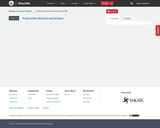
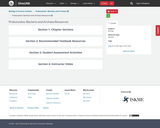
Carl Woese and his colleagues proposed that all life on Earth evolved along three lineages, called domains. Two of the three domains—Bacteria and Archaea—are prokaryotic. Prokaryotes were the first inhabitants on Earth, appearing 3.5 to 3.8 billion years ago. These organisms are abundant and ubiquitous; that is, they are present everywhere. In addition to inhabiting moderate environments, they are found in extreme conditions: from boiling springs to permanently frozen environments in Antarctica; from salty environments like the Dead Sea to environments under tremendous pressure, such as the depths of the ocean; and from areas without oxygen, such as a waste management plant, to radioactively contaminated regions, such as Chernobyl. Prokaryotes reside in the human digestive system and on the skin, are responsible for certain illnesses, and serve an important role in the preparation of many foods.

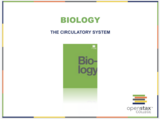
Most animals are complex multicellular organisms that require a mechanism for transporting nutrients throughout their bodies and removing waste products. The circulatory system has evolved over time from simple diffusion through cells in the early evolution of animals to a complex network of blood vessels that reach all parts of the human body. This extensive network supplies the cells, tissues, and organs with oxygen and nutrients, and removes carbon dioxide and waste, which are byproducts of respiration.

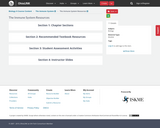
The environment consists of numerous pathogens, usually microorganisms, that cause disease in their hosts. Components of the immune system constantly search the body for signs of these pathogens. Mammalian immune systems evolved for protection from such pathogens. These systems are composed of an extremely diverse array of specialized cells and soluble molecules that coordinate a rapid and flexible defense system.

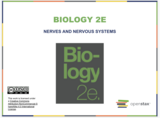
A nervous system is an organism’s control center. It processes sensory information from outside and inside the body and controls all behaviors, from fundamental to complex. Although nervous systems throughout the animal kingdom vary in structure and complexity, each functions to maintain homeostasis.

The course introduces students to the nature of life, concepts of biochemistry, metabolism, genetics, cellular and molecular biology. Students will learn about the various techniques used to study biology - cloning, gene editing and the exciting field of Genetic Engineering.This Open Education Resource Core Curriculum course was developed with funding from Texas Higher Education Board - Open Educational Resources Grant Program (OERGP) 2018-2019 RFA # 20337.

Given the broad definition of biotechnology applications and products, it is easy to see how there is enormous overlap within the fields of cellular biology, microbiology, chemistry, and biomedical engineering. It is the goal of this textbook to provide foundational knowledge to begin building your biotechnology toolkit and enter an exciting career of making a difference through biotechnology.
This textbook first explores the fundamentals of laboratory science and biotechnology. Unit 1 begins with a dive into the foundation of biology and chemistry by asking what is life and what are the molecules of life? The end of the unit offers a primer into laboratory science; preparing solutions and operating basic lab equipment. Unit 2 brings readers through a vital tool of biomanufacturing, understanding the growth and control of microbes. Many biotechnology products are made by harnessing the work of microbes, and this unit explores this invisible and intriguing world of microorganisms. The final unit, molecular biotechnology, offers a more in-depth look at how biological molecules such as DNA and protein are manipulated into creating useful products.
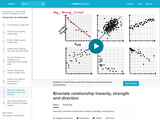
Describe a bivariate relationship's linearity, strength, and direction. In other words, plotting things that take two variables into consideration and trying to see whether there's a pattern with how they relate.

A free, Open Educational Resource, Blueprint for Success in College and Career is a students' guide for classroom and career success. This text, designed to show how to be successful in college and in career preparation focuses on study skills, time management, career exploration, health, and financial literacy.
The Blueprint for Success series comprises three books for the College Success and FYE (First-Year Experience) genre. The central text, Blueprint for Success in College and Career, is designed to show how to be successful in college and in career preparation. In addition, targeted sections on Study Skills and Time Management, and Career and Decision Making are available separately as Blueprint for Success in College: Indispensable Study Skills (https://press.rebus.community/blueprint1/) and Time Management Strategies, and Blueprint for Success in Career Decision Making (https://press.rebus.community/blueprint3/).

Body Physics was designed to meet the objectives of a one-term high school or freshman level course in physical science, typically designed to provide non-science majors and undeclared students with exposure to the most basic principles in physics while fulfilling a science-with-lab core requirement. The content level is aimed at students taking their first college science course, whether or not they are planning to major in science. However, with minor supplementation by other resources, such as OpenStax College Physics, this textbook could easily be used as the primary resource in 200-level introductory courses. Chapters that may be more appropriate for physics courses than for general science courses are noted with an asterisk symbol (*). Of course, this textbook could be used to supplement other primary resources in any physics course covering mechanics and thermodynamics.

Born in Slavery: Slave Narratives from the Federal Writers' Project, 1936-1938 contains more than 2,300 first-person accounts of slavery and 500 black-and-white photographs of former slaves. These narratives were collected in the 1930s as part of the Federal Writers' Project (FWP) of the Works Progress Administration, later renamed Work Projects Administration (WPA). At the conclusion of the Slave Narrative project, a set of edited transcripts was assembled and microfilmed in 1941 as the seventeen-volume Slave Narratives: A Folk History of Slavery in the United States from Interviews with Former Slaves. In 2000-2001, with major support from the Citigroup Foundation, the Library digitized the narratives from the microfilm edition and scanned from the originals 500 photographs, including more than 200 that had never been microfilmed or made publicly available. This online collection is a joint presentation of the Manuscript and Prints and Photographs divisions of the Library of Congress.